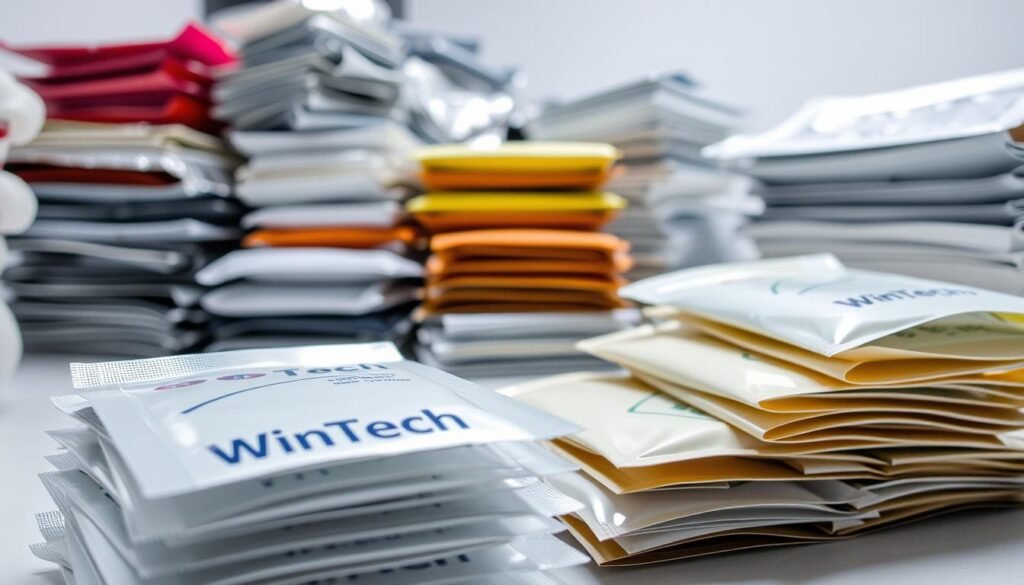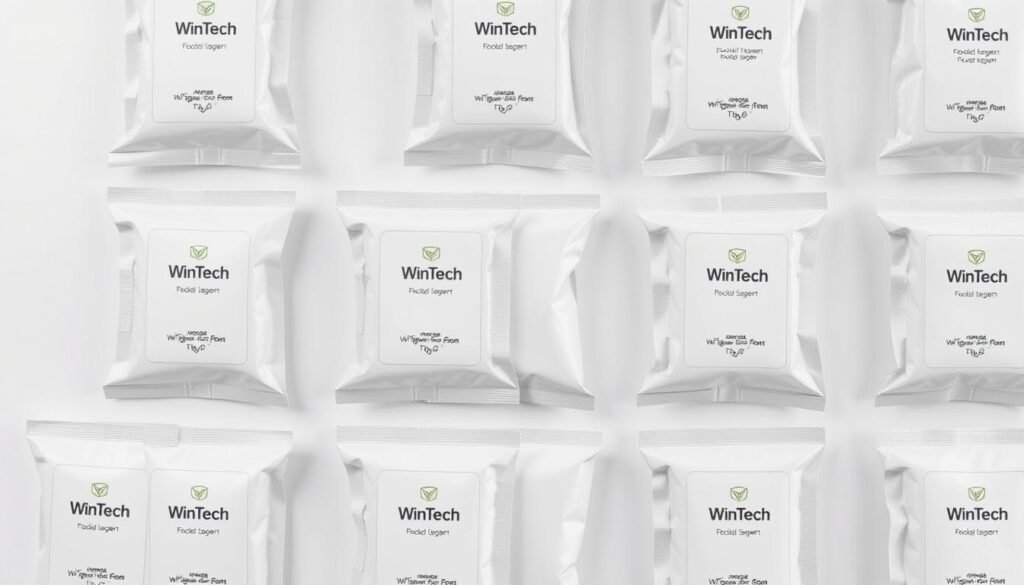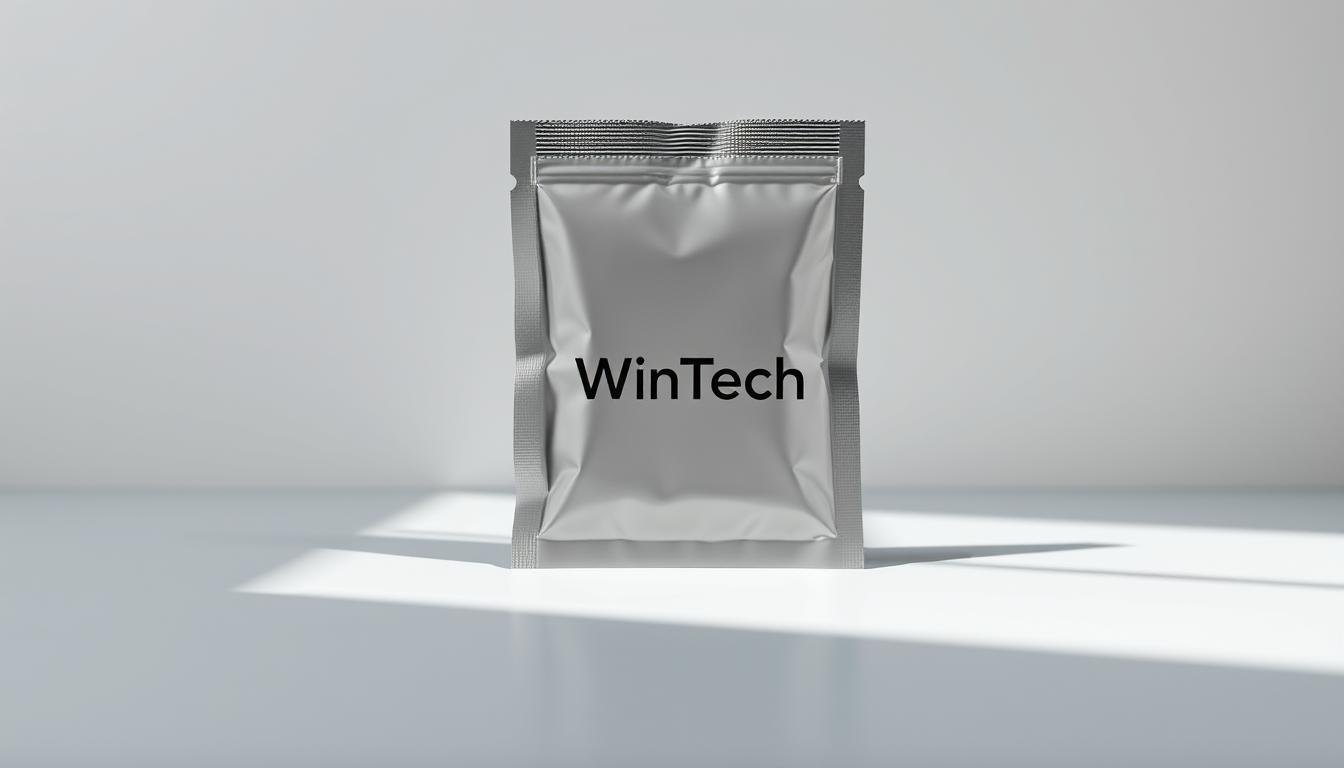What are Sachets and do you know that it is revolutionizing portion control in the American food sector? Sachets are small, sealed packets that contain a single serving or application of a product, playing a crucial role in maintaining product freshness and reducing waste.
These single-serve packets are commonly used in the food industry for portion control, ensuring that consumers receive the right amount of product every time. By utilizing sachets, food manufacturers can enhance product convenience, safety, and overall customer satisfaction.
Key Takeaways
- Sachets are small, sealed packets containing a single serving of a product.
- They are used for portion control and to maintain product freshness.
- Sachets enhance product convenience and safety.
- Their use is becoming increasingly popular in the American food sector.
- Sachets contribute to reducing waste and improving customer satisfaction.
What are Sachets: Definition and Characteristics
Sachets are small, sealed packets that contain a single serving of a product. What are sachets used for? They are utilized across various industries, including food, cosmetics, and pharmaceuticals, due to their convenience and effectiveness in portion control.
What are sachets made of? The materials used for sachets vary, including paper, plastic, and foil, each chosen for its specific properties such as barrier protection, durability, and cost-effectiveness. Understanding what are sachets made of is essential in determining their suitability for different applications.

Materials Used for Sachets
The choice of material for sachets depends on the product being packaged. For instance, foil sachets are often used for products that require a high barrier against moisture and light, such as coffee or spices. On the other hand, paper sachets might be used for less sensitive products.
Applications of Sachets
What are sachets used for? They are used for a variety of applications, including food packaging, where they provide a convenient way to portion out products like condiments, sauces, or instant soups. The question of what are sachets is closely tied to their functionality and versatility in packaging.
Key Benefits of Using Sachets
The benefits of using sachets include portion control, reduced waste, and increased product freshness. What are sachets, and what are their advantages? They offer a cost-effective and efficient packaging solution that enhances consumer convenience.
By understanding what are sachets and their characteristics, businesses can leverage these packaging solutions to improve their product offerings and meet consumer demands for convenience and sustainability.
What are Sachets: Their Role in Food Safety
What are sachets, and how do they contribute to the safety and preservation of food? Sachets, or single-serve packets, are designed to provide a precise amount of product, minimizing waste and ensuring consistency. What are sachets used for in the food industry? They are utilized for packaging a variety of products, from spices and seasonings to condiments and sauces.
What are sachets made of, and how do these materials contribute to food safety? Typically, sachets are constructed from flexible materials such as plastic, foil, or paper, which are chosen for their barrier properties and ability to preserve the contents. Understanding what are sachets and their composition is essential for appreciating their role in preventing contamination and maintaining product freshness.

How Sachets Improve Food Preservation
Sachets improve food preservation by providing a protective barrier against external factors such as moisture, light, and contaminants. What are sachets’ benefits in terms of preservation? They offer a tamper-evident packaging solution that ensures the product remains safe and fresh until consumption.
- Sachets are designed to be airtight, preventing the ingress of air and moisture.
- The materials used for sachets are selected based on their ability to protect the contents from external factors.
- By packaging products in sachets, manufacturers can extend shelf life and reduce the risk of contamination.
As noted by a food safety expert, “The use of sachets in food packaging has become increasingly popular due to their ability to maintain product integrity and safety.” This highlights the importance of understanding what are sachets and their benefits in the food industry.
“Sachets have revolutionized the way we package and consume food products, offering a convenient and safe solution for consumers.”
Regulatory Standards for Sachets in the Food Industry
What are sachets, and how do they comply with regulatory standards in the food industry? Sachets must adhere to strict guidelines regarding materials, construction, and labeling to ensure they meet food safety standards. Manufacturers must verify that the materials used for sachets are compliant with FDA regulations and other relevant standards.
| Regulatory Aspect | Description | Importance |
|---|---|---|
| Material Compliance | Ensuring materials used are safe for food contact | High |
| Labeling Requirements | Accurate labeling for consumer safety and information | High |
| Manufacturing Practices | Adhering to Good Manufacturing Practices (GMPs) | High |
In conclusion, understanding what are sachets and their role in food safety is crucial for both manufacturers and consumers. By appreciating the benefits and regulatory compliance of sachets, we can ensure a safer food supply chain.
What are Sachets: Innovations in Packaging
The packaging industry is witnessing significant innovations in sachet packaging, driven by consumer demand for convenience, sustainability, and product freshness. As a leading provider of packaging solutions, Wintech Package is at the forefront of these developments.
Emerging Trends in Food Manufacturing
Emerging trends in sachet packaging include the use of biodegradable materials, smart packaging technology, and customized sachet designs. These trends are transforming the way food manufacturers package their products, enhancing product safety and consumer experience. Understanding the sachet definition and its applications is crucial for food manufacturers to stay competitive.
Future Outlook: Sustainability
The future of sachet packaging is closely tied to sustainability. As consumers become more environmentally conscious, the demand for eco-friendly sachet packaging is on the rise. Manufacturers are responding by developing sachets made from biodegradable materials, reducing waste, and improving recyclability. The sachet benefits in the food industry are numerous, and their advantages are being leveraged by companies like Wintech Package.
Impact of Technology
Technology is playing a vital role in the evolution of sachet packaging. Advances in materials science and packaging technology are enabling the development of high-performance sachets that preserve product freshness and safety. The sachet uses in the food industry are diverse, and their advantages are being maximized through technological innovations.

